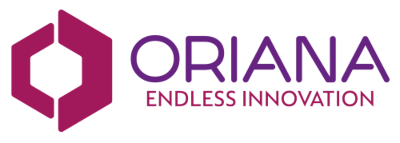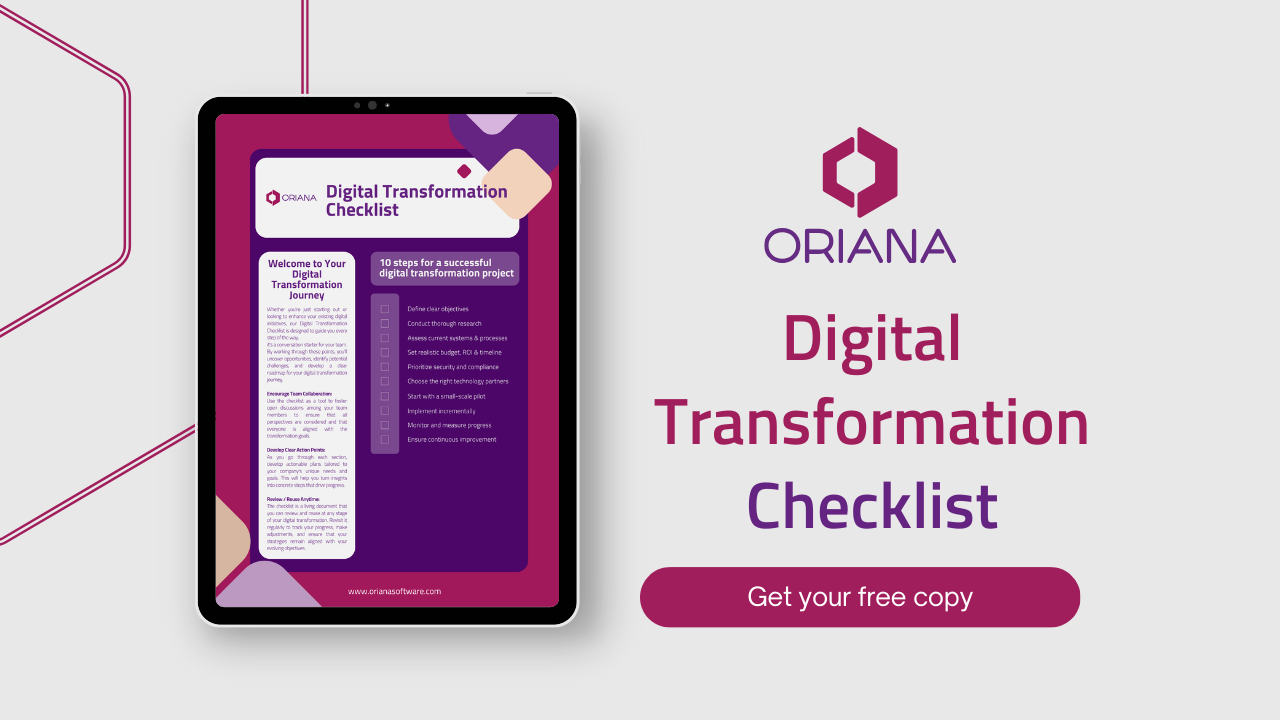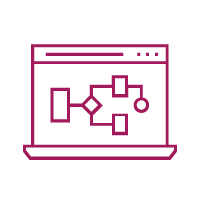Welcome to the final installment of our summer blog series on how to achieve sustainable digital transformation digital transformation! If you’ve been following along, we’ve covered everything from setting clear objectives to implementing your strategy incrementally. In this final chapter, we’ll discuss the critical steps of setting a realistic budget, ROI & timeline, monitoring and measuring progress, and ensuring continuous improvement. These final steps will help you cement your transformation efforts and achieve long-term success.
How to achieve sustainable digital transformation
1. Set Realistic Budget, ROI & Timeline
Setting a realistic budget, return on investment (ROI), and a timeline is crucial for any digital transformation initiative. Without a clear financial and temporal framework, even the most well-intentioned projects can falter.
Why It’s Important:
- Resource Allocation: Proper budgeting ensures that you allocate resources effectively across all phases of the project. For example, budgeting for cloud services like AWS or Azure upfront can prevent cost overruns.
- ROI Calculation: Estimating ROI helps you justify the investment to stakeholders and ensures that the project delivers value. The main elements of ROI: Cost of investment (implementation, license fee, support, environment etc.) and Revenue (more customer, faster operation, higher efficiency, reduce the manual work etc.)
- Project Planning: A well-defined timeline helps keep the project on track and sets expectations for all involved parties. Gantt charts or project management tools like Microsoft Project, Asana or ClickUp can assist in planning realistic timelines.
Tips for Setting a Realistic Budget, ROI & Timeline:
- Detailed Cost Breakdown: Start with a detailed cost breakdown, considering all potential expenses, including software licenses, hardware, training, and maintenance. Tools like QuickBooks or Xero can help manage and forecast expenses. You can quickly collect data about your costs if your request some quotations from various suppliers.
- Benchmarking: Use industry benchmarks to set realistic ROI expectations. For instance, benchmark against similar companies that have undergone digital transformation, using reports from sources like McKinsey or Gartner.
- Buffer Time: Always include a buffer in your timeline for unexpected delays. For example, if you estimate a 12-month implementation, plan for 15 months to cover any unforeseen issues.
Methodology:
- Cost-Benefit Analysis: Conduct a thorough cost-benefit analysis to weigh the potential benefits against the costs. Use tools like Microsoft Excel or specialized software like Crystal Ball to simulate different financial scenarios.
- Agile Budgeting: Implement agile budgeting practices, like time and material-based approaches, which allow you to adjust the budget as the project evolves. This is especially useful for long-term projects with variable costs, such as software development.
- Timeline Tracking: Use project management tools like Asana or ClickUp, to track timeline milestones and ensure adherence to the schedule.
2. Monitor and Measure Progress
Monitoring and measuring progress are essential to ensure that your digital transformation stays on course and meets its objectives. This involves tracking key performance indicators (KPIs) and making necessary adjustments along the way.
Why It’s Important:
- Visibility: Regular monitoring provides visibility into the project’s health and progress. For example, using dashboards in Power BI or Tableau can give you real-time insights into your project’s KPIs.
- Early Issue Detection: Early detection of problems allows for quicker interventions, reducing the risk of project failure. Anomalies in data can be flagged through tools like Google Analytics or New Relic.
- Continuous Feedback: Ongoing measurement enables continuous feedback, which is critical for making data-driven decisions. Tools like JIRA can help track progress and gather feedback.
Tips for Monitoring and Measuring Progress:
- Define KPIs: Clearly define KPIs that align with your project goals. For instance, if you’re implementing a new ERP system, KPIs might include system uptime, user adoption rate, and process efficiency improvements. The SMART goal setting technique is an evergreen. Use it in this case as well!
- Regular Reporting: Establish regular reporting intervals to review progress. Weekly or monthly reports generated through tools like Wrike or Smartsheet can help keep everyone informed. You can also set regular meetings and catch-ups with related resources and parties for a quick or longer status.
- Stakeholder Involvement: Keep stakeholders involved by sharing progress updates and seeking their input. Regular updates via tools like Slack or Teams can help maintain transparency.
Methodology:
- Dashboard Creation: Create custom dashboards in tools like Power BI or Google Data Studio that pull in data from various sources to provide a comprehensive view of your project’s performance. Or you can use Microsoft Excel at the beginning.
- Milestone Reviews: Schedule milestone reviews at key points in the project to evaluate progress and make necessary adjustments. Use project management frameworks like PRINCE2 or Agile for structured reviews.
3. Ensure Continuous Improvement
Digital transformation isn’t a one-time project—it’s an ongoing journey. Ensuring continuous improvement is key to staying competitive and adapting to changing market conditions.
Why It’s Important:
- Adaptability: Continuous improvement allows your organization to adapt to new technologies and market demands. For example, regular updates to your digital marketing strategy using tools like HubSpot can help you stay ahead of the competition.
- Employee Engagement: Encouraging a culture of continuous improvement keeps employees engaged and motivated. This can be fostered through regular training sessions using platforms like Cornerstone or Coursera. With gamification concepts, working towards the same goal together will not feel a burden, but more like a fun and exciting challenge.
- Innovation: Ongoing improvements foster innovation, allowing your business to stay at the forefront of your industry. Implementing Kaizen, a Japanese methodology focusing on continuous improvement, can help instill this mindset.
Tips for Ensuring Continuous Improvement:
- Regular Training: Invest in ongoing employee training to keep skills up to date. For instance, regular workshops on the latest software tools or industry trends can be beneficial.
- Feedback Loops: Establish feedback loops to gather input from employees and customers. Tools like SurveyMonkey or Typeform can help collect and analyze feedback.
- Process Optimization: Continuously evaluate and optimize processes using methodologies like Lean or Six Sigma. Use tools that can help map and optimize workflows. Also, do not forget that your KPIs set in the previous step can be the cornerstones for your optimization pursuits.
Methodology:
- Continuous Improvement Frameworks: Implement continuous improvement frameworks like PDCA (Plan-Do-Check-Act) or Six Sigma to systematically improve processes.
- Technology Upgrades: Regularly assess and upgrade your technology stack to incorporate the latest advancements. Conduct annual reviews of your IT infrastructure to identify areas for improvement.
- Innovation Workshops: Hold regular innovation workshops to encourage creative thinking and problem-solving. These can be facilitated through tools like Miro or IdeaBoardz.
How to achieve sustainable digital transformation: The Oriana Advantage
At Oriana, we understand that digital transformation is continuous journey that weaves through the entire organization. That’s why we provide comprehensive support at every stage—from budget planning and progress monitoring to fostering a culture of continuous improvement. With Oriana as your technology partner, you can rest assured that your digital transformation is in expert hands, ensuring long-term success and adaptability in an ever-changing market.
Don’t miss out on the full guide to digital transformation—download it today and take the first step towards a more innovative future. And if you’re ready to discuss your specific needs, contact us for a personalized consultation.
Stay tuned for more insights and case studies on our blog!




